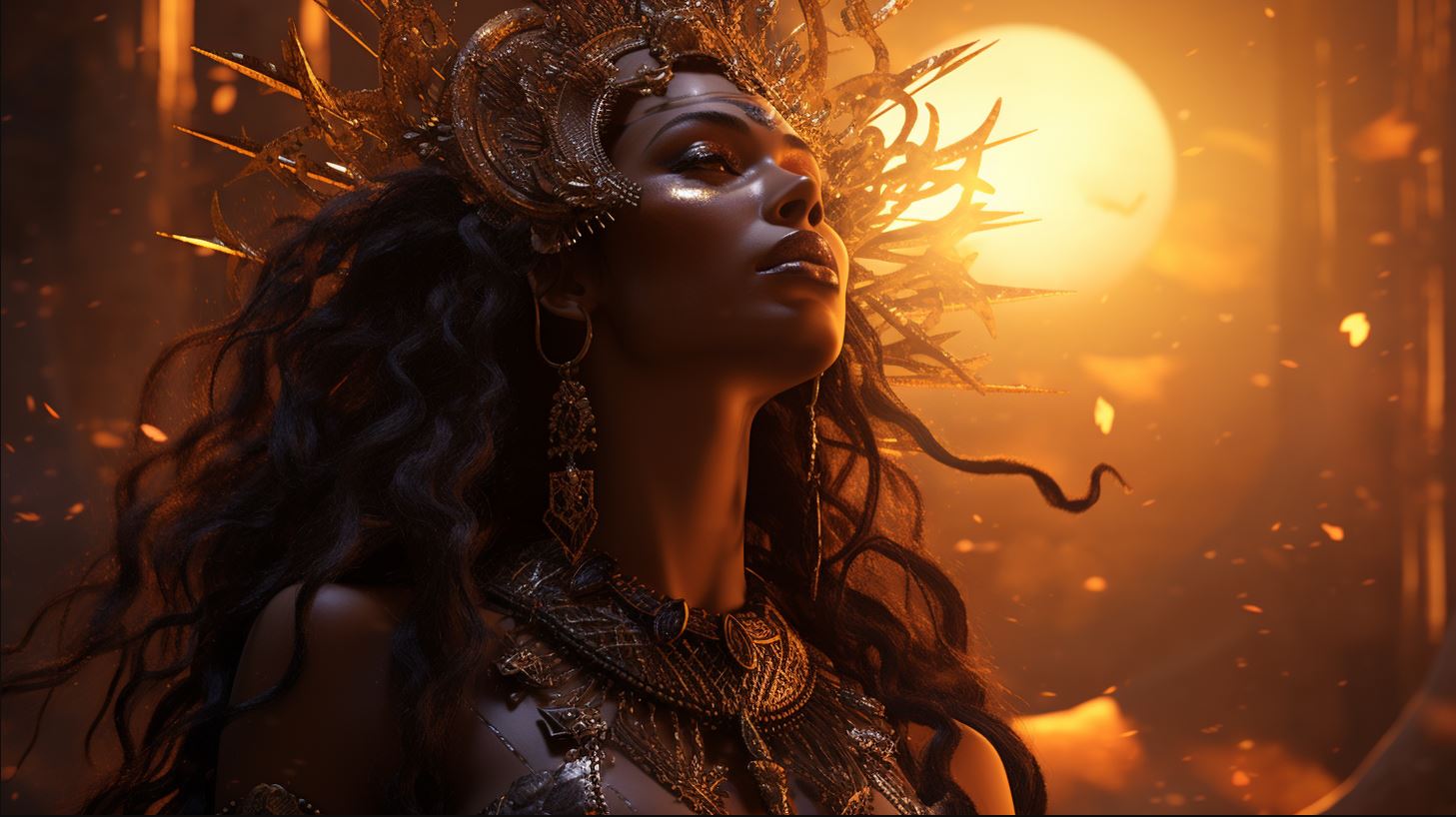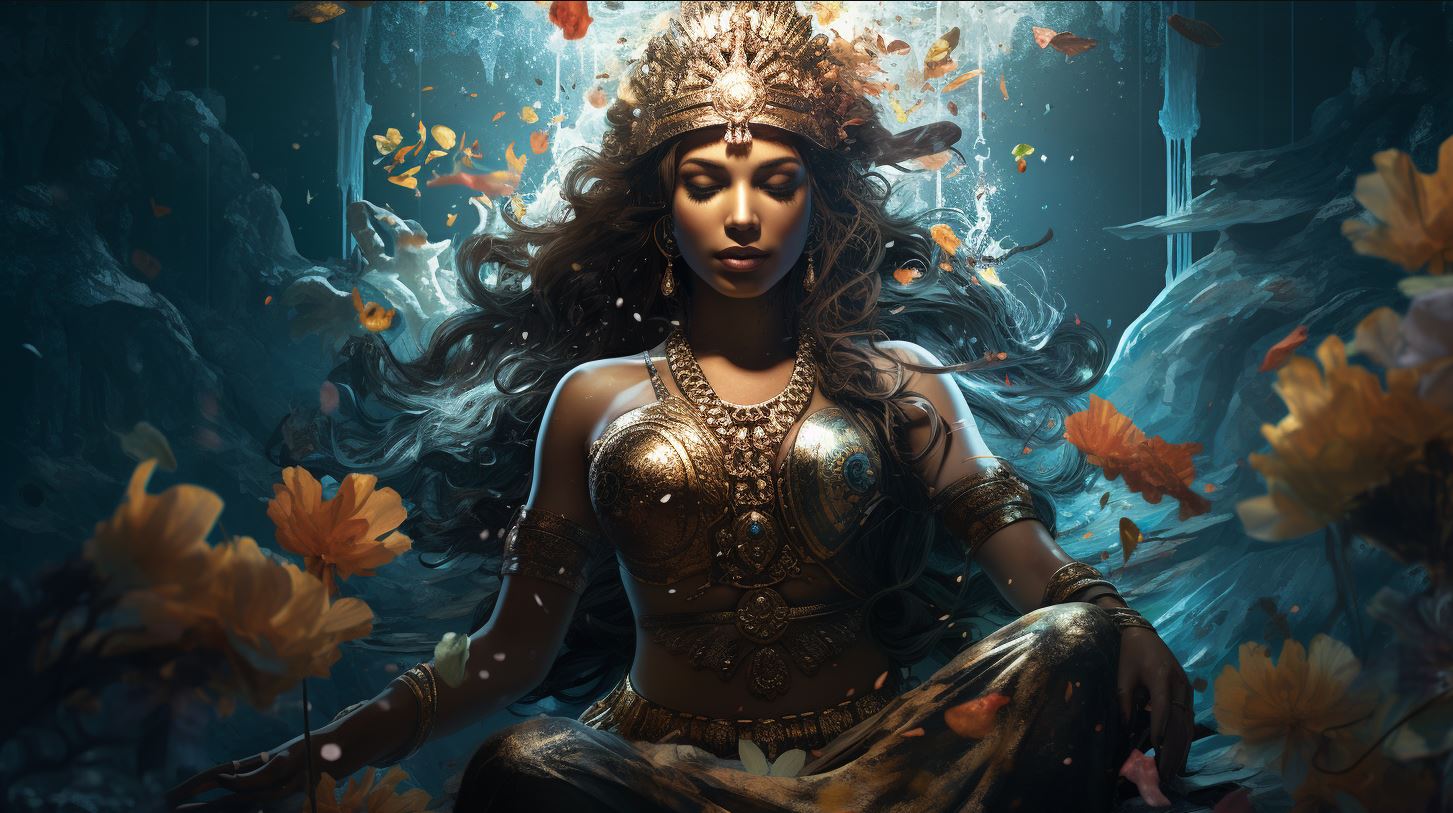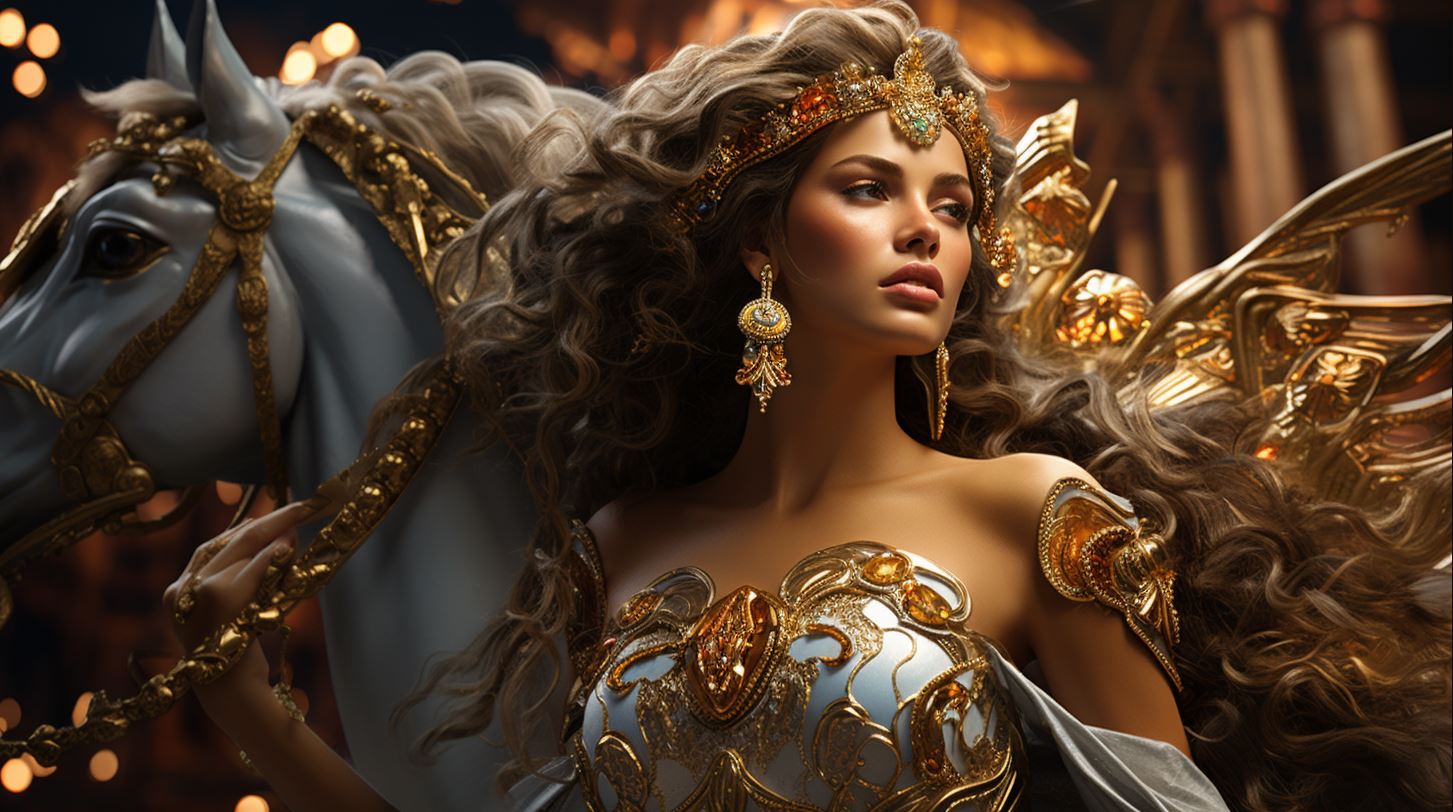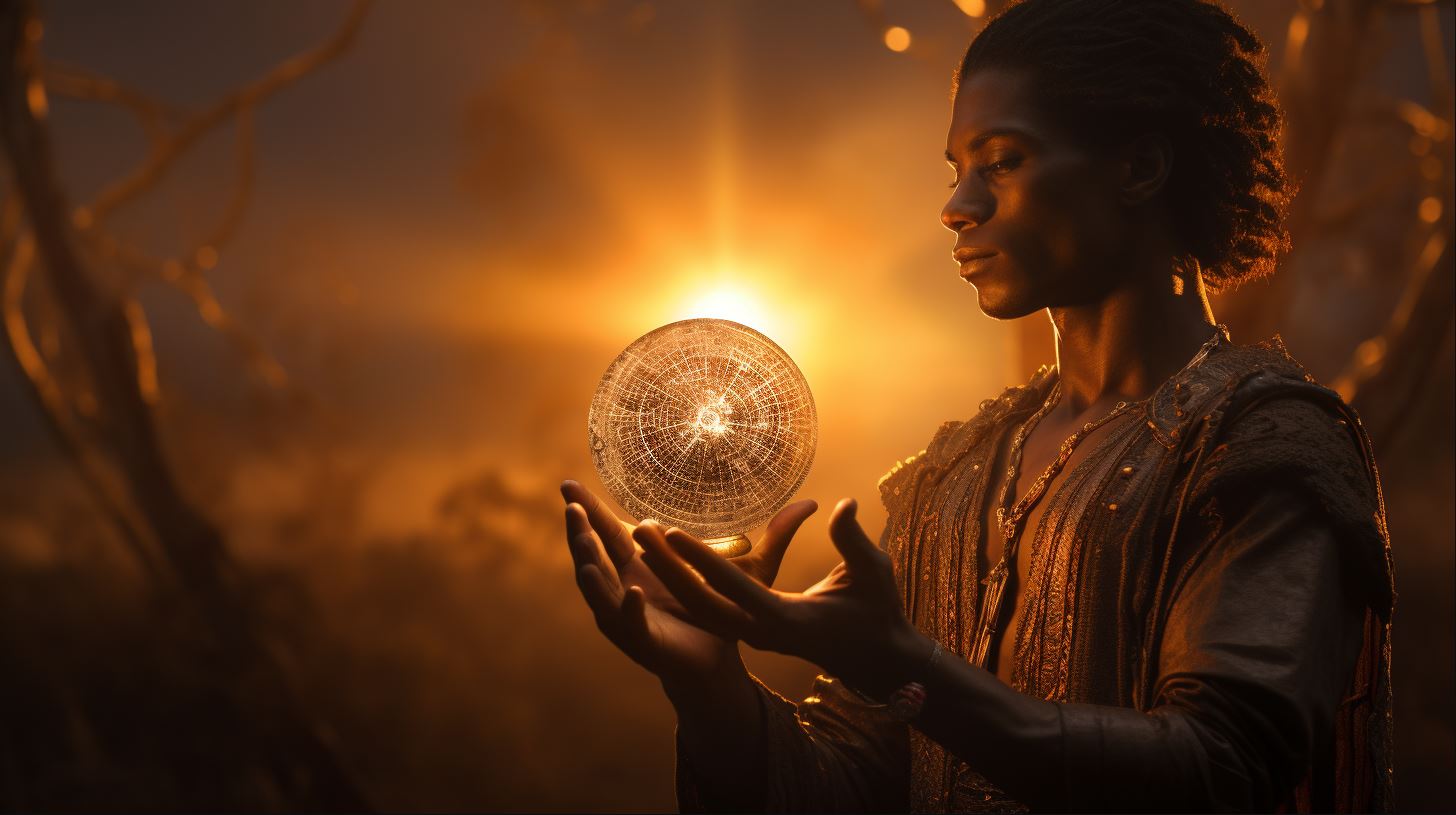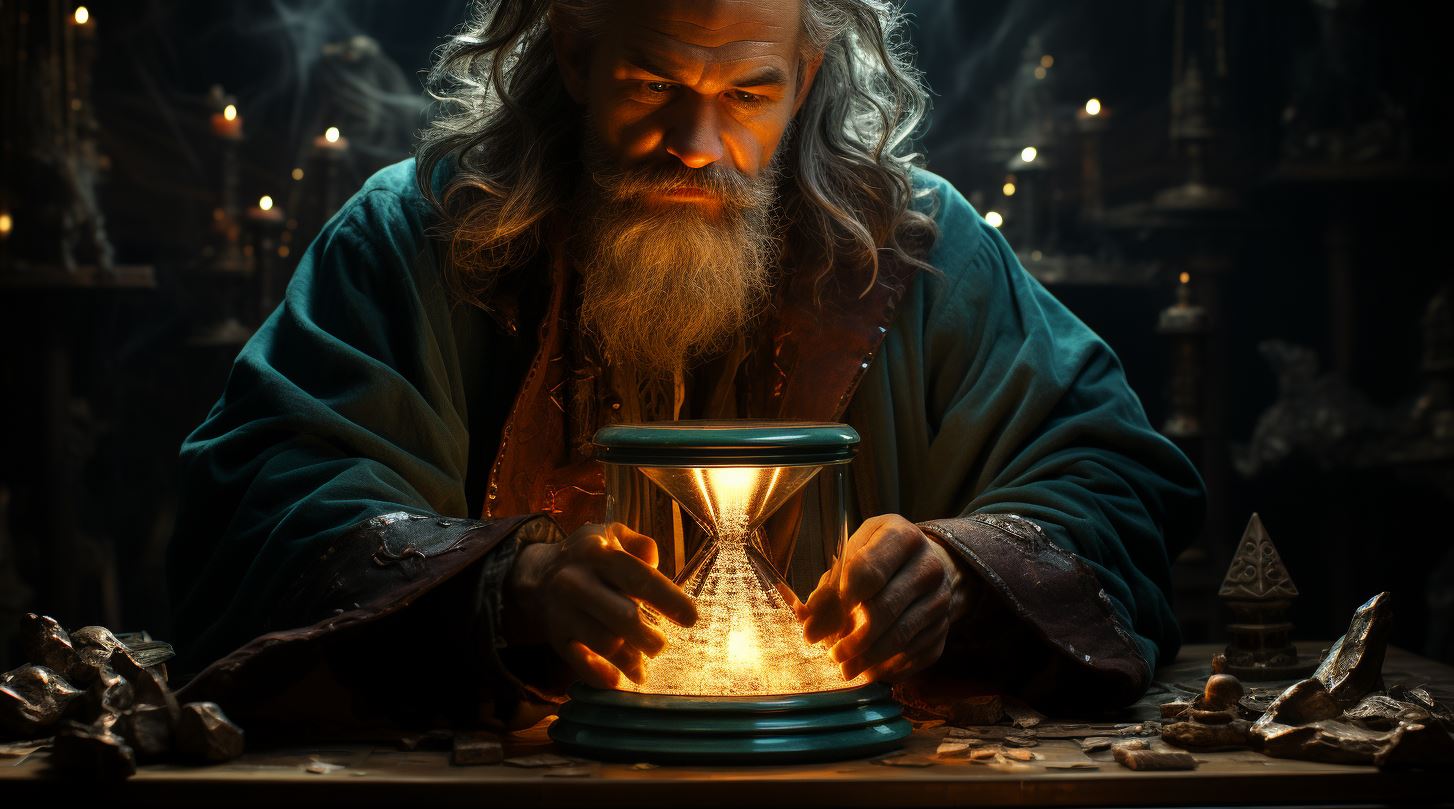Daena Goddess: Unveiling the Mysteries of the Ancient Iranian Religion
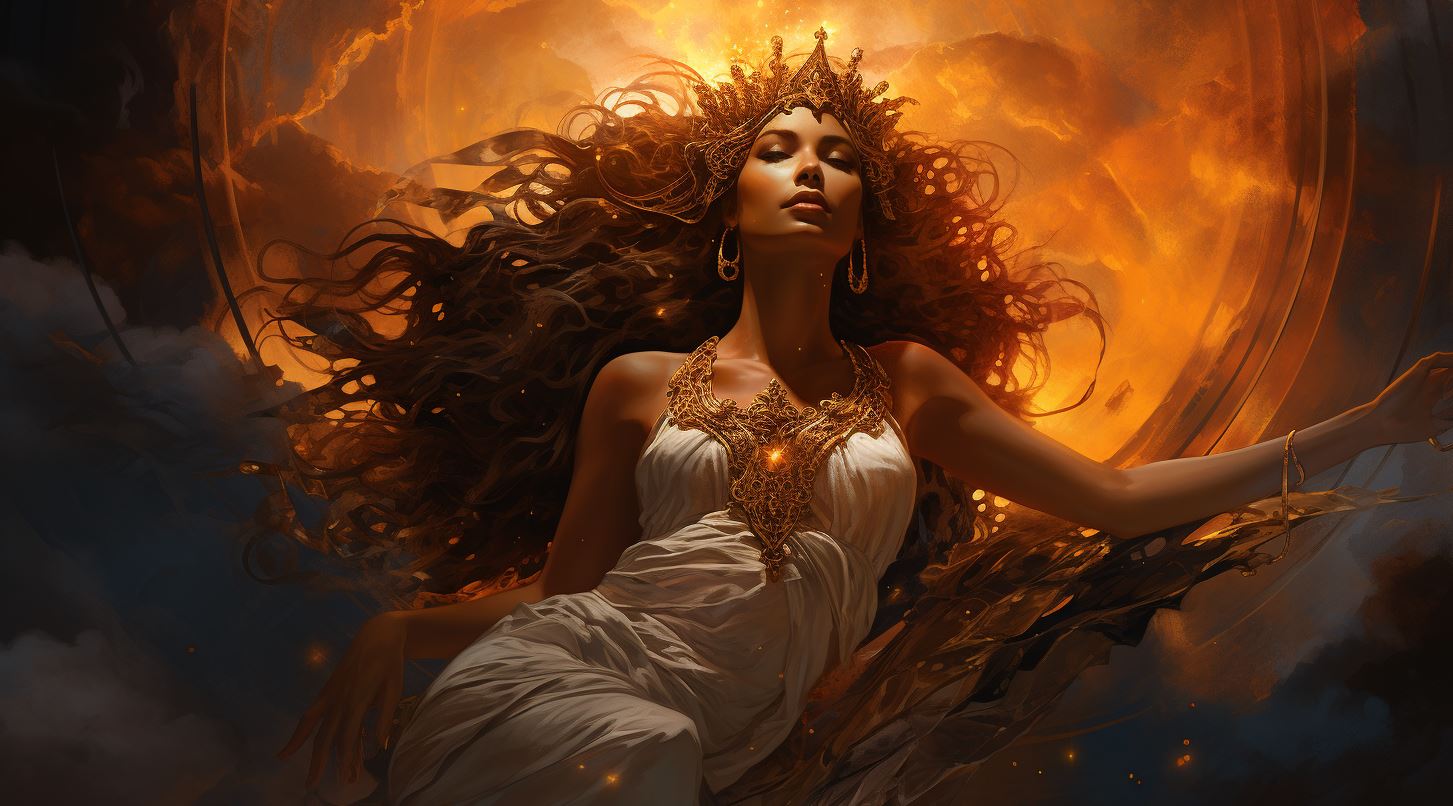
Daena Goddess, a pivotal figure in ancient Iranian religion, holds significant importance in the hierarchy of the soul. As a manifestation of one’s deeds during their lifetime, Daena determines the destiny of the soul.
She can appear as a beautiful maiden or a hideous witch, depending on one’s actions. In addition, the goddess Bamya plays a crucial role in guiding the sun god Mithra through the heavens.
This article explores the divine nature of Daena, the connection between Daena and the soul, the twilight goddess Bamya, and their significance in festivals and celebrations. Furthermore, it delves into the concept of Daena as a symbol of wisdom and its modern interpretations and relevance in Zoroastrian communities.
The Ancient Iranian Religion: A Brief Overview
The ancient Iranian religion holds a rich history and a profound belief system that continues to influence Zoroastrianism even in modern times. This section provides a glimpse into the origins, history, mythologies, and key concepts of this captivating faith.
Origins and History of Zoroastrianism
Zoroastrianism traces its roots back to ancient Iran, dating back several millennia. Its founder, Prophet Zoroaster (also known as Zarathustra), lived around the 6th century BCE. Born into a society deeply entrenched in polytheism and idol worship, Zoroaster introduced revolutionary concepts that formed the basis of this monotheistic religion.
Over the centuries, Zoroastrianism spread across Persia and has left an indelible mark on Iranian culture and history.
Persian Mythology and its Influence
Persian mythology, intricately intertwined with Zoroastrianism, played a significant role in shaping the ancient Iranian religion. Myths and legends revolving around divine beings, epic battles, and cosmic forces captivated the imagination of believers and served as allegorical expressions of fundamental truths.
The stories of gods, heroes, and supernatural creatures continue to resonate and contribute to the cultural identity of the Iranian people.
Key Concepts and Beliefs in the Zoroastrian Faith
Zoroastrianism embodies several core beliefs that form the foundation of its religious practices and worldview. These include the fundamental duality between good and evil, the importance of ethical choices, the existence of cosmic forces, and the ultimate triumph of righteousness.
Additionally, concepts such as the immortality of the soul, the responsibility of individuals for their actions, and the divine judgment after death hold immense significance in this ancient faith.
In conclusion, delving into the ancient Iranian religion provides a captivating journey through the origins and history of Zoroastrianism, the influence of Persian mythology, and the key concepts and beliefs that shape its religious framework.
Daena Goddess: Exploring the Divine Figure
Unveiling the Concept of Daena
Daena, a central figure in ancient Iranian religion, holds immense significance in the Zoroastrian faith. Scholars and theologians have delved into the depths of Daena’s essence, seeking to unravel its true nature.
This section explores the fundamental concepts associated with Daena, shedding light on the profound understanding of this divine figure.
Associated Symbolism and Interpretations
Daena’s significance goes beyond its conceptual understanding. This divine figure is rich in symbolism and interpretations, representing various aspects of human existence. The symbolism linked to Daena encompasses notions of virtue, morality, and the inherent struggle between good and evil.
Explore the profound symbolism and diverse interpretations that contribute to the enigmatic nature of Daena.
The Role of Daena in the Zoroastrian Cosmology
Daena is inseparable from the intricate cosmology of the Zoroastrian religion. Positioned within the hierarchical structure of the spiritual realm, Daena embodies the interplay between the material and immaterial worlds.
Its role as the manifestation of one’s deeds and the determining force of one’s destiny makes Daena a crucial component of Zoroastrian cosmology. This section uncovers the profound role played by Daena in shaping the understanding of the universe within the context of ancient Iranian beliefs.
The Connection Between Daena and the Soul
The concept of Daena holds immense significance in understanding the journey of the soul within the realm of ancient Iranian religion. Daena serves as a guiding force, playing a pivotal role in the afterlife judgment and determining the destiny of souls.
Let’s delve further into the multifaceted aspects of Daena’s connection with the soul.
The Significance of Daena in the Journey of the Soul
Daena acts as a spiritual compass, leading the soul towards its ultimate destination. As the soul embarks on its transformative journey, Daena represents a divine light, illuminating the path and assisting in navigating through the various realms of existence.
Its presence imparts a sense of direction, purpose, and moral responsibility to the soul.
Daena’s Role in the Afterlife Judgment
In the intricate tapestry of the afterlife, Daena emerges as a pivotal figure during the judgment process. It becomes an embodiment of the deeds and actions performed by individuals during their earthly existence.
The appearance of Daena, whether as a captivating maiden or a fearsome witch, reflects the weighing of one’s deeds and determines the ultimate fate of the soul.
Implications of Good and Bad Deeds on the Destiny of the Soul
The destiny of the soul hinges upon the nature and consequences of one’s deeds.
Good actions and righteousness weigh favorably, enabling the soul to safely cross the Bridge Činvat and venture into the realm beyond. Conversely, the burden of unfavorable deeds can lead to the soul’s downfall and subsequent challenges in traversing into the next realm.
Understanding the profound connection between Daena and the soul within the ancient Iranian belief system enhances our comprehension of the intricate web of spirituality, judgment, and the eternal journey embarked upon by individuals.
Bamya: The Twilight Goddess and Marking the Difference
The worship of Bamya, the twilight goddess, holds a significant place within Zoroastrianism, the ancient Iranian religion. By exploring the inclusion of Bamya in Zoroastrianism, we gain insights into the symbolism and role she plays in this revered faith.
Moreover, Bamya’s presence extends beyond religious rituals, leaving a profound impact on personal and social aspects of life.
Inclusion of Bamya in Zoroastrianism
Bamya is recognized as a prominent deity in Zoroastrianism, entrusted with guiding the chariot of the sun god Mithra through the celestial realms. Her inclusion in this religion reflects the belief in the interconnectedness of various deities and their roles in maintaining cosmic harmony.
Symbolism and Role of Bamya in the Religion
Bamya’s association with twilight signifies a transitional phase between light and darkness. As twilight represents an in-between state, Bamya embodies the liminal realm connecting different planes of existence. She symbolizes the transient nature of life and the importance of embracing change and transformation.
Impact on Personal and Social Life through Marking the Difference
Bamya’s presence in Zoroastrianism offers profound lessons for personal and social development. By marking the difference between light and darkness, she emphasizes the significance of individual choices and actions in shaping society.
Through her teachings, followers are encouraged to strive for positive change, embrace their unique roles, and foster a harmonious community.
As we delve into the realm of Bamya, we come to appreciate the weight of her symbolism and the impact she has on followers’ personal growth and societal well-being.
Let us discover the wisdom embedded in the twilight goddess’s presence and learn how she inspires individuals to make a difference in their lives and communities.
Festivals and Celebrations Associated with Daena and Bamya
The celebration of Daena and Bamya holds immense significance in the ancient Iranian religion, providing a platform to honor their divine presence and their influence on the Zoroastrian faith.
These festivals and celebrations bring communities together in joyous gatherings and rituals, symbolizing the victory of light over darkness, goodness over evil, and wisdom over ignorance.
Sada Festival: Honoring Daena and the Power of Light
The Sada Festival stands as a testament to the reverence accorded to Daena and the power of light in the Zoroastrian tradition.
Held at dusk in various parts of Iran, this festival marks the transition between day and night, emphasizing the balance between light and darkness. During the Sada Festival, a grand bonfire is lit to symbolize the triumph of light, illuminating the path of the righteous and dispelling the shadows of ignorance.
Rituals and Practices during the Sada Festival
The rituals and practices observed during the Sada Festival further underscore the devotion to Daena and the celebration of light. As the sun sets, Zoroastrians gather around the bonfire, partaking in prayers, hymns, and offerings.
The fire, representing the divine spark, serves as a focal point for spiritual renewal, purification, and connection with the divine. Participants also engage in acts of charity, spreading kindness and compassion to honor the teachings of Daena.
Significance of Bamya in Festivities and Cultural Celebrations
Bamya, the twilight goddess, plays a significant role in the festivities and cultural celebrations associated with Daena. As the goddess of dusk, she represents the ephemeral nature of time and the delicate balance between day and night.
Bamya’s presence reminds us of the importance of seizing the moment and embracing the transition from light to darkness. Her symbolism encourages individuals to make a positive impact in their lives and the world, leaving a lasting legacy of goodness and wisdom.
The inclusion of Bamya in cultural celebrations adds depth and meaning to the festivities, reminding participants of the power they hold to make a difference. Bamya’s influence permeates rituals, dances, and artistic expressions performed during these celebrations, accentuating the transformative potential of embracing change and seeking enlightenment.
- Emphasizing the harmony between light and darkness
- Celebrating the triumph of light over darkness
- Renewing spiritual connection through bonfire rituals
- Practicing acts of charity and compassion
- Reflecting on the transient nature of time
- Embracing the balance between day and night
- Inspiring positive impact and leaving a lasting legacy
- Encouraging individuals to seek enlightenment and wisdom
These festivals and celebrations personify the divine essence of Daena and Bamya, fostering a deep sense of ancestral connection and communal unity.
Through ritual observances and cultural expressions, Zoroastrians reaffirm their devotion and reverence for these divine figures, celebrating their teachings and embodying their intrinsic qualities in their everyday lives.
Daena Goddess and the Divine Wisdom
Throughout ancient mythology, numerous goddesses have been associated with wisdom and knowledge.
In the realm of divine wisdom, Daena Goddess holds her own unique place. Let’s explore the significance of Daena and how she compares to other goddesses of wisdom.
Daena in Comparison to Other Goddesses of Wisdom
When considering goddesses associated with wisdom, figures like Athena and Maat often come to mind.
Athena, the Greek goddess of wisdom, embodies strategic intellect and divine insight. Similarly, Maat, the Egyptian goddess of truth and justice, represents wisdom in maintaining cosmic balance.
While each goddess brings her exceptional qualities, Daena offers a distinctive perspective.
Being deeply rooted in ancient Iranian religion, Daena combines wisdom with a significant focus on personal accountability and individual actions. Her role extends beyond knowledge alone, encompassing the judgement and consequences associated with one’s deeds.
Influence of Daena’s Knowledge and Wisdom on Zoroastrian Society
In Zoroastrianism, Daena plays a crucial role in shaping the community’s values, ethics, and spiritual development. Her teachings emphasize the importance of mindful actions and their impact on both personal and collective well-being.
Daena’s wisdom serves as a guiding compass for followers of this ancient faith, urging them to make choices aligned with truth, justice, and righteousness. Her influence extends to various aspects of life, including relationships, social interactions, and decision-making processes.
Daena Goddess: A Symbol of Divine Guidance and Enlightenment
Daena represents more than just intellectual enlightenment; she embodies divine guidance that leads individuals towards spiritual growth and enlightenment. Devotees seek Daena’s divine wisdom to navigate their lives with integrity and moral clarity.
By embracing Daena’s teachings, individuals can cultivate a deeper understanding of themselves, their purpose, and their role in the world. Daena’s wisdom directs them towards a path of self-discovery, self-improvement, and service to others, ultimately leading to personal fulfillment and a harmonious society.
Modern Interpretations and Relevance of Daena Goddess
The ancient figure of Daena Goddess continues to hold significance in contemporary Zoroastrian communities, offering insights and inspirations for individuals seeking guidance and meaning in their lives. In this section, we explore the role of Daena in modern interpretations and its relevance in today’s society.
Daena’s Role in Contemporary Zoroastrian Communities
Within the Zoroastrian faith, Daena has evolved into a symbol of divine wisdom and guidance. In contemporary Zoroastrian communities in the United States, Daena’s teachings are embraced as a source of ethical values, spiritual enlightenment, and moral guidance.
Members of the community often turn to Daena for inspiration and direction in navigating the complexities of modern life.
Implications for Personal Growth and Self-Reflection
The concept of Daena provides individuals with an opportunity for personal growth and self-reflection. By contemplating the principles represented by Daena, such as the weighing of one’s actions and the pursuit of righteousness, individuals can evaluate their own choices and strive for a more virtuous and purposeful existence.
Daena’s teachings encourage introspection and encourage individuals to align their actions with their values and aspirations.
Daena Goddess: Inspiring a Balanced and Meaningful Life
Daena serves as a reminder of the importance of balance and harmony in life. Her embodiment of wisdom and divine guidance inspires individuals to seek equilibrium between different aspects of their lives, such as work and personal relationships, spirituality and material pursuits.
By embracing Daena’s teachings, individuals can strive for a life filled with purpose, fulfillment, and a deep sense of inner peace.
In conclusion, the figure of Daena Goddess holds a vital role in contemporary Zoroastrian communities in the United States.
Through her teachings and symbolisms, Daena continues to inspire personal growth, self-reflection, and the pursuit of a balanced and meaningful life. Embracing Daena’s wisdom can bring individuals closer to a life guided by virtue, harmony, and spiritual enlightenment.

